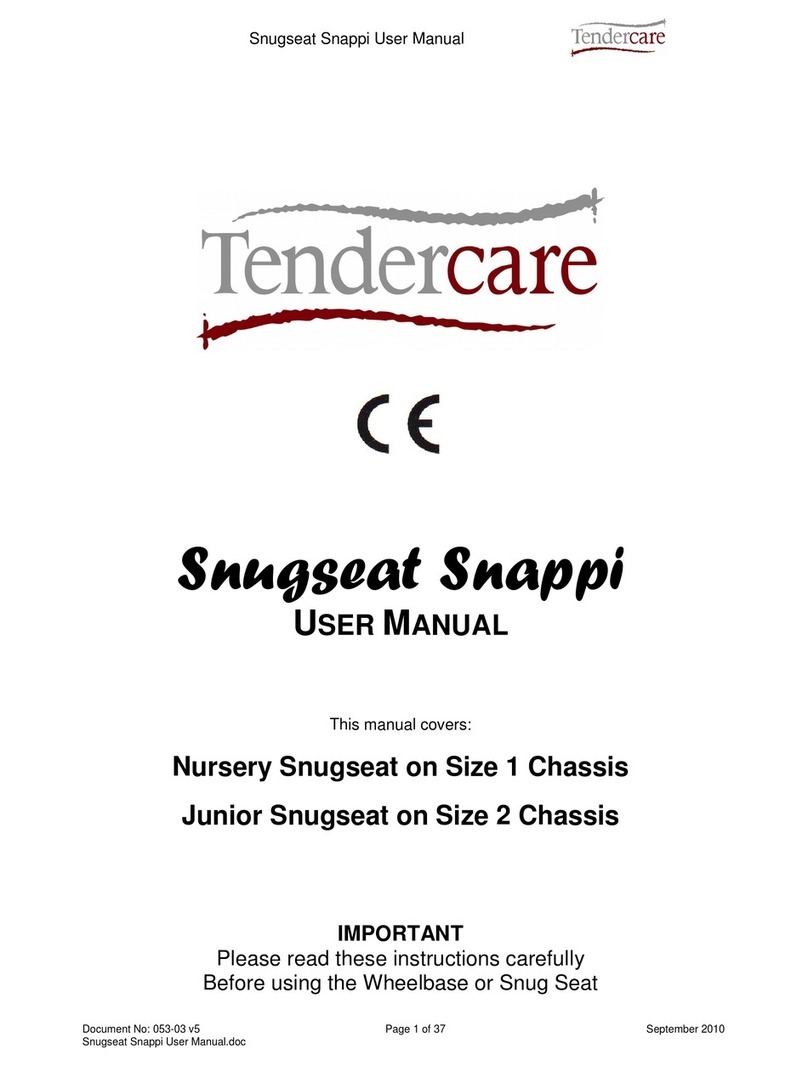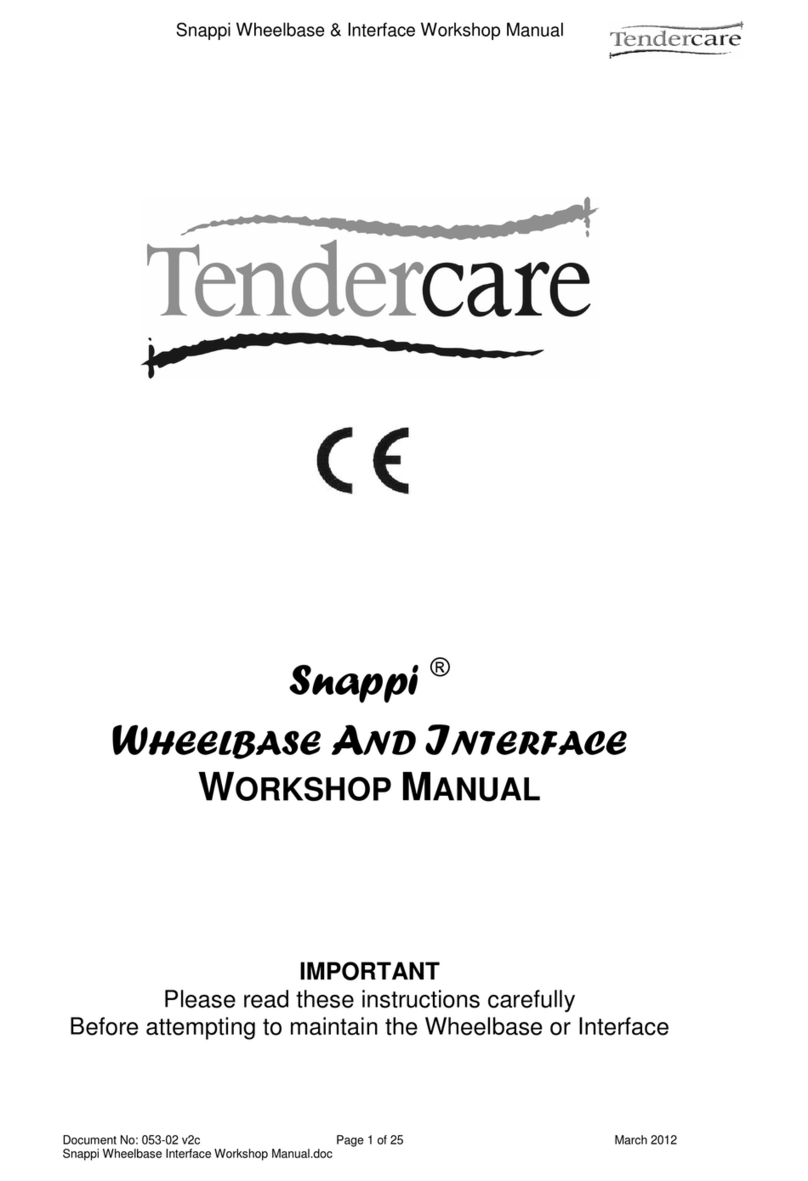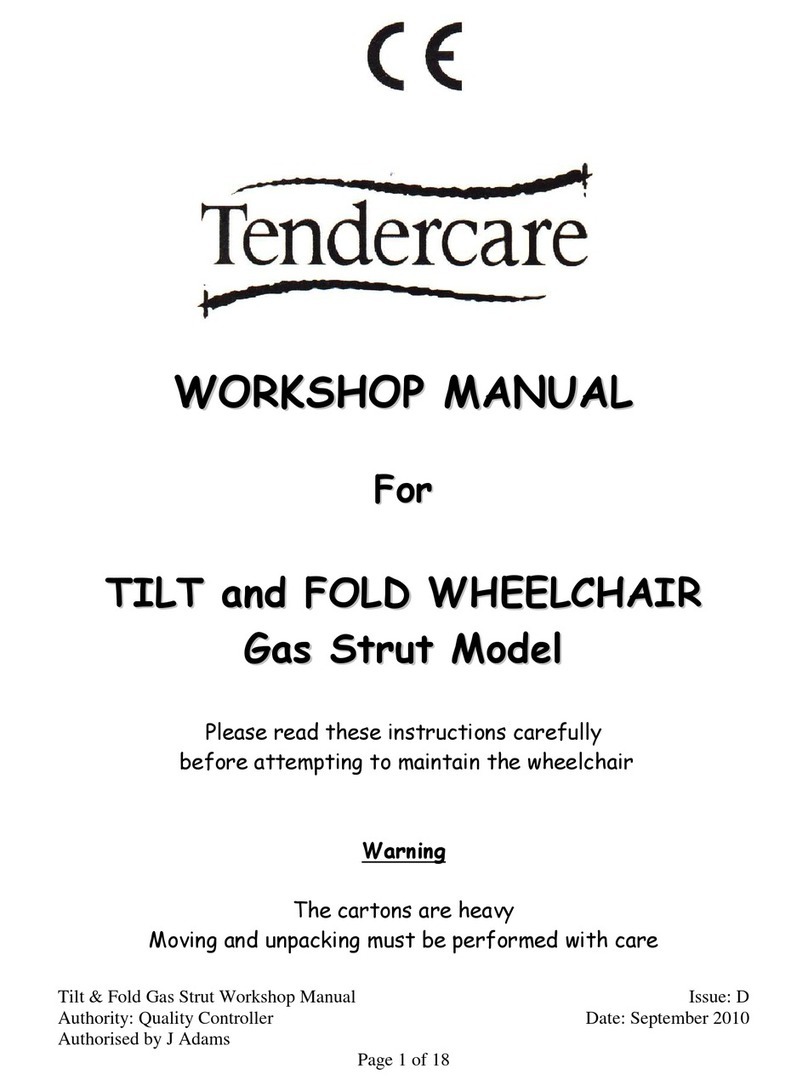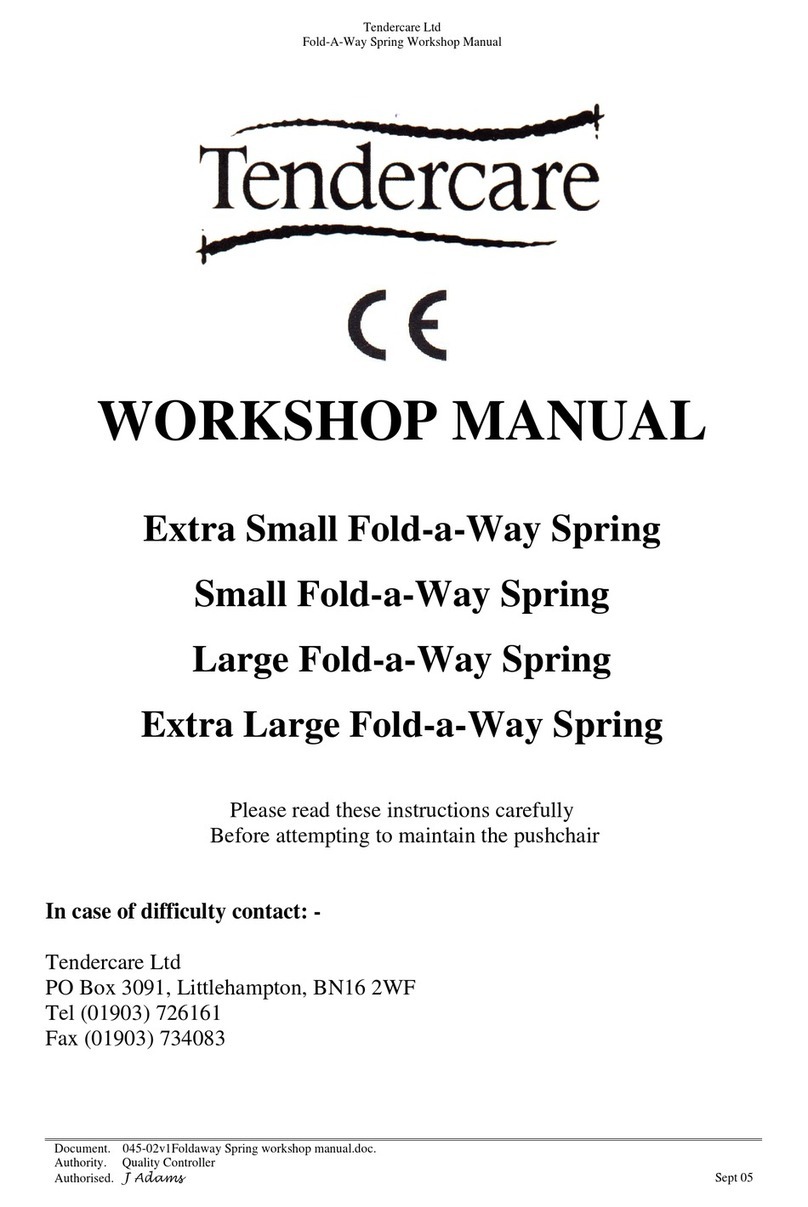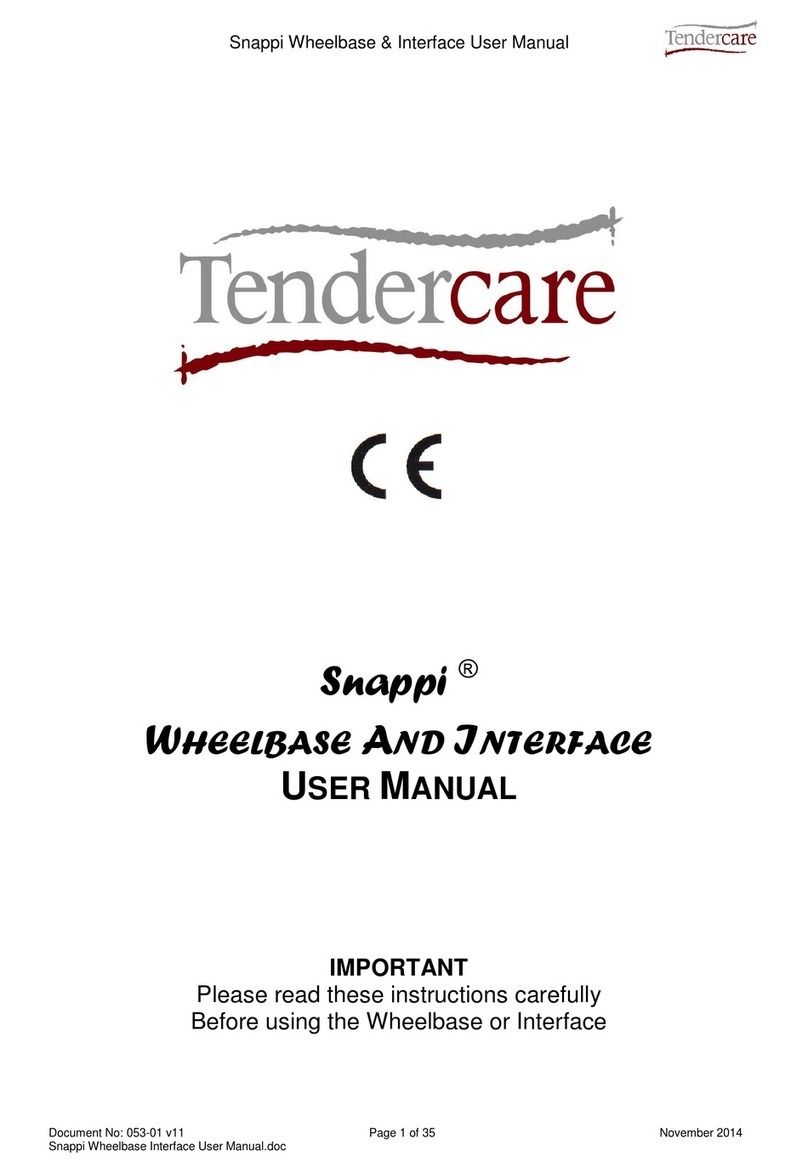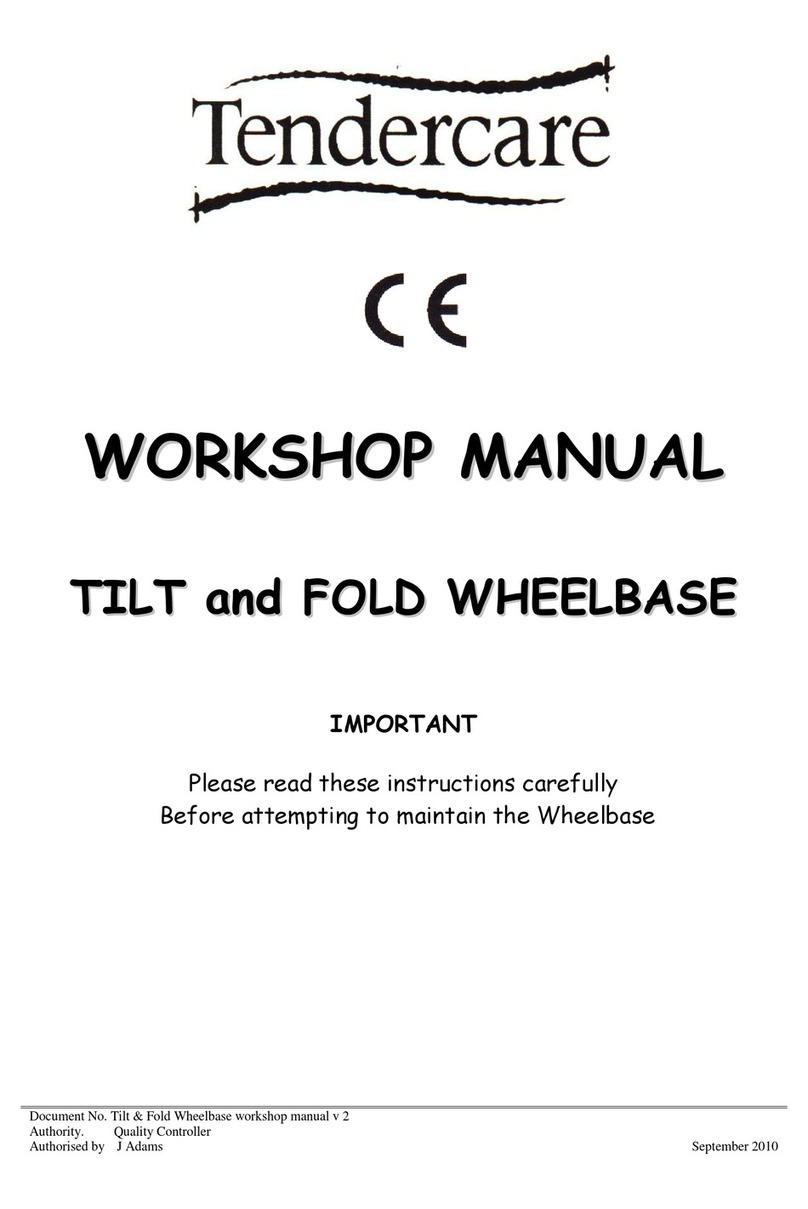Tendercare Ltd
The Snugseat Spring User Manual
Document No 034-01v4 Snugseat Spring
User Manual.doc
Authority. Quality Controller
Authorised. J Adams Page 5 Dec 05
Item Description Page
1Who to contact if you have difficulty…………………………………………….. 6
2Intended user………………………………………………………………………. 6
3Unpacking………………………………………………………………………….. 7
4Preparing for use…………………………………………………………………... 8
4.1 Unfolding the frame and assembling the buggy…..……….…………………… 8
4.2 Brakes………………………...………………………….……………………… ..9
4.3 Fitting seat to buggy...…………………………………….…………………….. ..9
4.4 Fitting footrests to seat.…………………………………….…………………… 10
4.5 Fitting pommel to seat…………………………………….…………………….. 11
4.6 Tilt in Space……………………………………………….……………………. 11
5Setting up the seat unit………………………………………………………..…… 12
5.1 Fitting support pads…………………………………….………………….…… 13
5.2 Setting up the patterned cover………………………….………………………. 16
5.3 Adjusting the harness…………………………………………………………… 17
5.4 To lock and release the harness………………………………………………… 17
5.5 Final checks……………………………………………………………………... 17
6User instructions 18
6.1 Getting into the Snugseat…..…………………………………………………… 18
6.2 Getting out of the Snugseat….………………………………………………….. 18
7Attendant pushing...……………………………………………………………….. 18
7.1 Pushing………………………………………………………………………….. 18
7.2 Brakes…………………………………………………………………………… 19
7.3 Comfort…………………………………………………………………………. 19
7.4 Lifting and general safety………………………………………………………. 20
8Cleaning…………………………………………………………………………….. 20
8.1 Buggy and seat shell..…………………………………………………………… 20
8.2 Patterned covers and tummy pad.….…………………………………………… 20
8.3 Modular foam pads……….…………………………………………………….. 20
8.4 5-Point harness………………………………………………………………….. 20
9Maintenance………………………………………………………………………... 20
9.1 Routine maintenance…………………………………………………………… 21
9.2 Six monthly maintenance….……………………………………………………. 21
10 Oxygen cylinder……………………………………………………………………. 22
11 Warranty…………………………………………………………………………… 22
12 Transporting the Snugseat……………………………………………………….. 22
12.1 Preparing Snugseat for transport……………………………………………… 23
12.2 Attaching Snugseat to vehicle…………………………………………………. 23
12.3 Car fixing kit…………………………………………………………………... 26
13 Repairs………………………………………………………………………………

